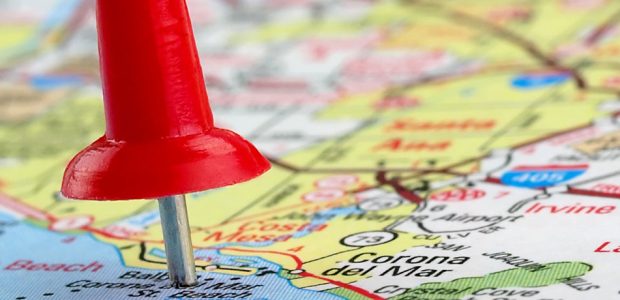Mobile advertising is becoming significantly more effective than it has ever been, thanks to location-based marketing. However, for banks, this is an area yet to be explored. Location-based data hidden in the mobile devices of customers could easily serve as a foundation for financial institutions to experiment with geofencing. Leading megabanks are already contemplating all the ways they can use location-based data to increase engagement and marketing ROI, so following their example just might be the right move for your bank.
What is Geofencing?
When a mobile device or RFID tag enters or exits a virtual perimeter that has been set up around a specific area, known as a geofence, an app or other software that employs location-based services, such as geofencing, uses GPS, RFID, Wi-Fi, or mobile data to trigger a pre-programmed action.
Geofencing is a term most commonly used in mobile marketing, which indicates that users will receive targeted adverts when they are in that particular location that only applies to them.
For many years, Starbucks has used mobile location-based data. They claim that using this type of geo-targeting significantly boosts the proportion of customers who stop by to purchase one of their products. Could banks boost clientele and retention as well? Certainly.
According to Accenture data, about half of all consumers say they want banking companies to support them when buying non-banking products like a house or a new car.
They contend that financial institutions like banks could help people make these crucial choices by providing relevant contextual information. This should be based on their location, price range, and other personal preferences, such as the lowest mortgage rates or the best offers on insurance or auto loans.
How Can You Make the Most of Location-Based Data?
Mobile location data used by banks can help identify common practices in customer behavior. A bank can build profiles and develop categorization around customer shopping habits and branch attendance trends while employing geofencing as a marketing strategy. There are two ways these financial institutions can operate location-based information – at the micro or macro level.
Micro Geofencing
- Customers would receive personalized information about their balance sheets and most recent transactions as soon as they walk into a bank.
- Customers would receive an assigned queue number automatically, as soon as they enter your branch
- Customers would be allowed cardless access to ATM waiting areas
- Customers would receive a text with the location of the closest branch or ATM
Micro geofencing is a great way to stay one step ahead, so consider sending a Wednesday morning email inviting customers to make an appointment, if you already know they usually frequent your branch on Wednesdays during their lunchtime or after work hours.
Macro Geofencing
When a campaign is launched, monitor changes in the number of branch visits to determine whether the campaign was effective.
Benchmark your own performance using information from competitors.
Keep track of when the branches are busiest and how long customers wait.
Macro geofencing doesn’t mean that you know exactly where your customers are at any given time. It only means that you are aware that they have visited a certain location in the past, which makes this approach a lot less invasive.
Let’s say you want to organize some co-branding campaigns with other organizations. Having data on where customers might shop gives you an advantage when deciding which organizations to collaborate with. Alternatively, if you want to test a marketing campaign, you can tailor the offer to customers in a certain region and track branch activity before launching the campaign broadly.
Mobile Behavioral Trajectory
The most beneficial application of mobile location data spans multiple contexts. Its true value lies in the development of a behavioral trajectory with these four elements: place, persistency, period, and path.
What this means is that by using this type of data, you will be able to know where your customers go, how often they go there, how long they stay, and where to next.
The objective here is to monitor behavior to develop better consumer profiles. A bank may have demographic information and possibly income information from transactions like direct deposits, but they usually don’t have a lot more.
Collecting this kind of data can prove beneficial to your bank in the long run, as you will be able to have a clearer insight into your customer’s profile.
Final Note on Geofencing
We are still in the early stages of understanding the full potential of geofencing, which is an extraordinarily powerful commercial solution. Geofencing could have a significant positive impact on banks’ marketing efforts. These financial institutions may easily anticipate a 20% rise in conversions thanks to the acquisition of personal information and a targeted campaign boost.


